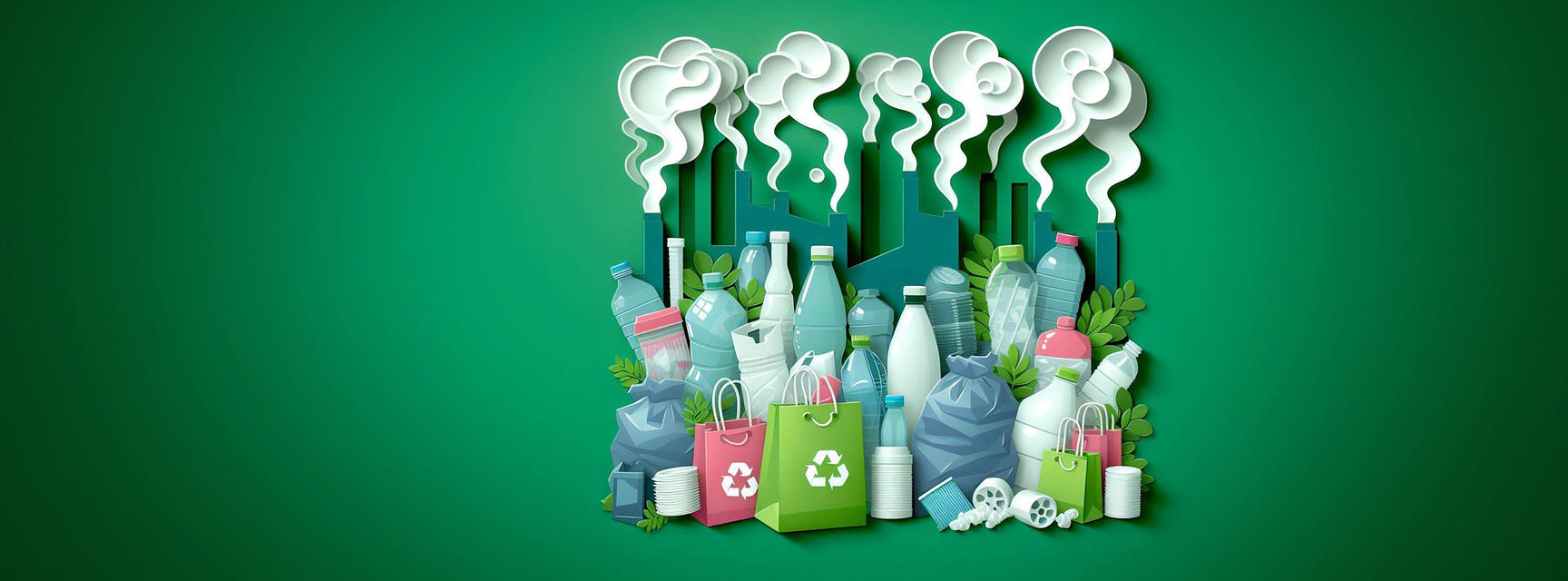Oxford chemists collaborate on roadmap for circular carbon and plastics economy
Researchers from the Department of Chemistry have today outlined ambitious targets to help deliver a sustainable and net zero plastic economy.
Plastics are some of the most useful materials we have at our disposal. And yet, their ubiquity in modern life comes with a substantial cost, in terms of the pollution and carbon dioxide emissions associated with their unsustainable production and use.
Recognising this challenge, a collaborative team – which includes researchers in chemistry, law, and environmental economics – argue in a paper published today in Nature for a rethink of technical, economic, and policy paradigms that have until now led to rising carbon emissions and pollution. By analysing the current and future global plastics system, they propose a set of interventions from now until 2050 to allow the transition to net zero emissions and to reduce other negative environmental impacts.
Their study focuses on the technical pathways that maximize the circular re-use of carbon (dioxide) between plastic products, waste plastics, and feedstock materials that can be made back into plastics. Of the four plastic industry scenarios they analyse, only one – a bold system change across all parts of the plastics economy – leads to sufficient greenhouse gas savings to ensure the global plastics systems curbs its climate impacts and meets UN Sustainable Development Goals.
This bold future scenario is centred on four targets: reducing future plastic demand by one half, switching to renewable plastics, recycling almost all retrievable plastics, and minimizing environmental impacts. The authors emphasise the need for concerted, specific actions across all four target areas, setting out ‘smart design’ principles for sustainable plastics, and noting that there is not a one-size-fits-all solution. A timeline of interventions helps readers focus on the actions needed to reach net-zero emissions by 2050.
This paper has been published during the negotiations for the second ever global pollution treaty, which began in late 2022 and may be completed in 2024. This treaty will be focused specifically on “the full life cycle of plastic, including its production, design, and disposal”. The team behind the paper have been working with the UN Environment Programme and the UK Government on scientific advice, as part of these negotiations.
Professor Charlotte Williams of the Department of Chemistry says:
We need plastics and polymers, including for future low emission technologies like electric vehicles, wind turbines and for many essential everyday materials. Our current global plastics system is completely unsustainable, and we need to be implementing these series of very bold measures at scale, and fast. This is a solvable problem but it needs coherent and combined action, particularly from chemical manufacturers.
Chemist Fernando Vidal, a lead author on the paper and former Oxford Martin School Fellow on the Future of Plastics, says:
The time for action has arrived, we cannot afford to wait any longer. We must change our concepts around the way we make, use, and dispose of plastics, otherwise we risk perpetuating this problem. The upcoming UN Global Plastic Treaty is the opportunity to make a lasting change in the right direction.
Cameron Hepburn, Battcock Professor of Environmental Economics at Oxford’s Smith School of Enterprise and the Environment, says:
The problem is that plastics, while contributing hugely to global pollution and greenhouse gas emissions, are extraordinarily useful. Our research finds that creating a circular economy for plastics in order to reduce their negative impacts is possible, but only if we can reduce future demand by half, switch to renewable plastics that aren’t made from fossil fuels, recycle 95% of what’s left, and minimise environmental impacts at every step of the process. The challenge is enormous, but we present a roadmap to transform the whole system, including through the smart design of plastics, economic and legal interventions, and a shift away from overconsumption.
Read more in the full paper, published today in Nature: https://www.nature.com/articles/s41586-023-06939-z
Header image: Microsoft Image Creator.





